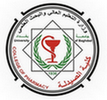The College of Pharmacy discussed the PhD dissertation entitled Vemurafenib Ionic Liquid Microemulsion Based-Gel: Preparation and Characterization” by the student Mohammed Jasim Neamah and the supervisor, Assistant Professor Dr. Entidhar J. Al-Akkam, at the Pharmaceutics Department. The study aimed to formulate a microemulsion of vemurafenib by incorporating ionic liquids either as surface-active ionic liquids or in place of conventional oil phases. Three types of microemulsion were prepared, including conventional microemulsion (F1-F6), which is prepared using conventional oil phases (peppermint oil), conventional non-ionic surfactant (Tween 20), and conventional co-surfactant (PEG 400). Microemulsions featuring ionic liquids (CP1-CP9) as surfactants utilize surface-active ionic liquids, like 1-tetradecyl-3-methylimidazolium bromide, as surfactants. Aqueous ionic liquid microemulsions (BT1-BT3 and OT1-OT3), in which ionic liquids (such as 1-Butyl-3-methylimidazolium hexafluorophosphate or 1-Octyl-3-methylimidazolium hexafluorophosphate) constitute the nonpolar oily phase, while the polar domain is occupied by water,. The prepared microemulsions were subjected to several characterization processes, including assessments of droplet size, polydispersity index, zeta potential, visual attributes, dilution, and electrical conductivity tests. Physical stability evaluations, pH determination, content uniformity examinations, and in-vitro drug release analyses were conducted. The prepared microemulsions, including conventional microemulsions F3, surface active ionic liquid-based microemulsions (CP5, CP7, and CP8) and aqueous ionic liquid-based microemulsions (BT1, BT2, OT1, and OT2), had passed all microemulsion characterization and evaluation tests, had droplet size in the microemulsion range (less than 100 nm), and had an acceptable release profile, were used to prepare microemulsion-based gel. The study concluded that microemulsion-based gels were successfully prepared for effective topical delivery of vemurafenib when the ionic liquid was used to prepare microemulsion. The study recommended that topical application of vemurafenib gel might be beneficial for skin cancer patients who experience side effects from oral dosage forms of the medication or even for patients in the early stages of the disease as adjuvant therapy after surgical resection.



